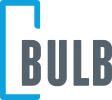
Use our tips to get a game-changing CX Software
Let’s face it, CX is the most important factor every business should focus on today. If your customer experience isn’t perfect, it doesn’t matter how great your service is or how affordable your products may be – your customers won’t convert. Worse, they’ll choose your competitors.
Today, 73% of customers say CX is the most important criterion when deciding whether to interact with and buy from a brand. What’s more, the majority of customers are even willing to pay more for a good experience.
Fortunately, CX software solutions exist to help companies keep up with the ever-evolving expectations of their target audience. The only problem is that finding the right tool is easier said than done. If you’re planning to upgrade your CX software in 2023, here are some of the features you shouldn’t be without.
The 5 Must-Have Features for CX Software
When selecting a CX software platform, each company must consider a number of critical features. Which options are right for you will depend on the nature of your business and your specific goals. For example, some organizations have a higher need for security, privacy, and compliance features than most, while others place more emphasis on tools for hybrid and remote work. These are some of the features that will be critical for any business:
1. Omnichannel Communications
Today’s customer journeys are complex, multi-layered, and span a number of different channels. A customer may want to start an interaction with your company through a self-service bot or app, and then move on to a conversation with an agent on the phone.
You need to make sure your CX solution allows you to communicate with your customers through the channels they use most often. But it’s also important that these channels are connected on the backend so you can track the context and details of a conversation from one environment to the next.
96% of consumers expect companies to make it as easy as possible for them to move between channels. So if you’re giving your customers the option to choose between text, video, and phone, make sure it’s all connected. Speaking of connected solutions: Try to make sure your CX platform makes it easy for your customers to move from a self-service environment to a conversation with an agent. The right tools should automatically pass contextual information to your agents when they pick up the phone or answer a chat message.
2. Self-Service Solutions
Customers are becoming more and more self-sufficient. Increasingly, they prefer to search for an answer to a problem themselves rather than contacting an agent. In fact, 68% of customers say they prefer to use self-service channels for simple questions.
Finding a CX solution that allows you to support your customers throughout their self-service experience is critical to meeting the needs of today’s digital customers. However, it’s important to think beyond the simple FAQ-style bot. As customers’ problems become more complex, they’re relying on bots to help them address a wider range of issues.
Implementing AI tools with true conversational intelligence, natural language processing, and automated algorithms will help you deliver a next-generation self-service experience and outshine the competition. This can also reduce the volume of calls your agents are struggling with! The smarter your self-services are, the more they take the pressure off your staff. They can also gather important information about customer behavior and trends.
3. Workflow Automation
Automation is quickly becoming a must-have in the CX landscape, especially as labor shortages and the Great Resignation make it increasingly difficult to find talented professionals for any team. Additionally, automation doesn’t replace your staff, it helps eliminate repetitive tasks that would take up too much of your staff’s time so they can focus on the things that really matter.
A CX solution with built-in workflow automation capabilities allows you to design fantastic workflows for any need, whether you’re submitting customer data to a CRM or organizing your team’s schedule. Automation can help you route your customers to the right person every time based on smart insights and triggers while empowering your employees to get more done.
You can even take your automation strategy to the next level by using a low-code platform that lets you create your own automation. This ensures that your employees can actively improve their workflows with simple, practical tools that don’t require developer skills.

4. Flexible Integrations and Configuration
A CX platform is typically one component of an advanced customer experience and service strategy for any organization. If you want to ensure your team members can work seamlessly on a single pane of glass, you need to make sure your CX platform integrates with the tools they already use, such as collaboration apps, help desks, and CRM software.
A flexible platform that can adapt to your team’s technology needs gives you more room to add new functionality with connected apps as needed. While you’re looking for integration opportunities, you should also consider how easy your CX system is to configure and manage. You shouldn’t have to hire a developer every time you want to make a change.
Look for a convenient, easy-to-use environment that your administrators can access from anywhere with an Internet connection. You might even be able to connect your CX tools directly to your AI analytics, recording, and contact center software.
5. Powerful Reports and Analytics
Finally, keep in mind that we live in a world where customer expectations are constantly changing and evolving. The only way to stay ahead of the curve and your competitors is to gather as much information as you can about your target audience, your people, and any other metrics that are relevant to you.
A good CX platform should give you valuable insights into each step of the customer journey, where there are friction points, and what you can do to improve satisfaction. At the same time, it should help you keep your finger on the pulse of your employees’ experiences, no matter where your team is located. If you’re able to monitor and address employee frustrations, you can ensure that your team members are able to perform at their best.
If possible, look for analytics and reporting tools that integrate with AI to give you insights into trends that you mightn’t be able to see on your own. These solutions can even send real-time information to agents in the form of dashboards to help them improve their performance at that moment. Customizable reports that let you drill down into key metrics are also useful.
Choose the Right CX Platform
Ultimately, finding the right CX platform for your team is likely to be a personal process for any organization. You need to think carefully about your CX goals, your digital transformation strategy, and how you plan to serve your customers in the future.
However, if you focus on finding the five features above for your CX solution, you can greatly improve your chances of future-proofing your customer experience strategy. The Cempresso DCS platform includes all of the features on this list – plus a few more – as a comprehensive platform for the end-to-end total experience.
Learn today how you can transform your CX strategy with Bulb Technologies.
Are you ready to improve your agents' experience?
Contact us and leverage our Cempresso platform to deflect 25% of calls to self-service



